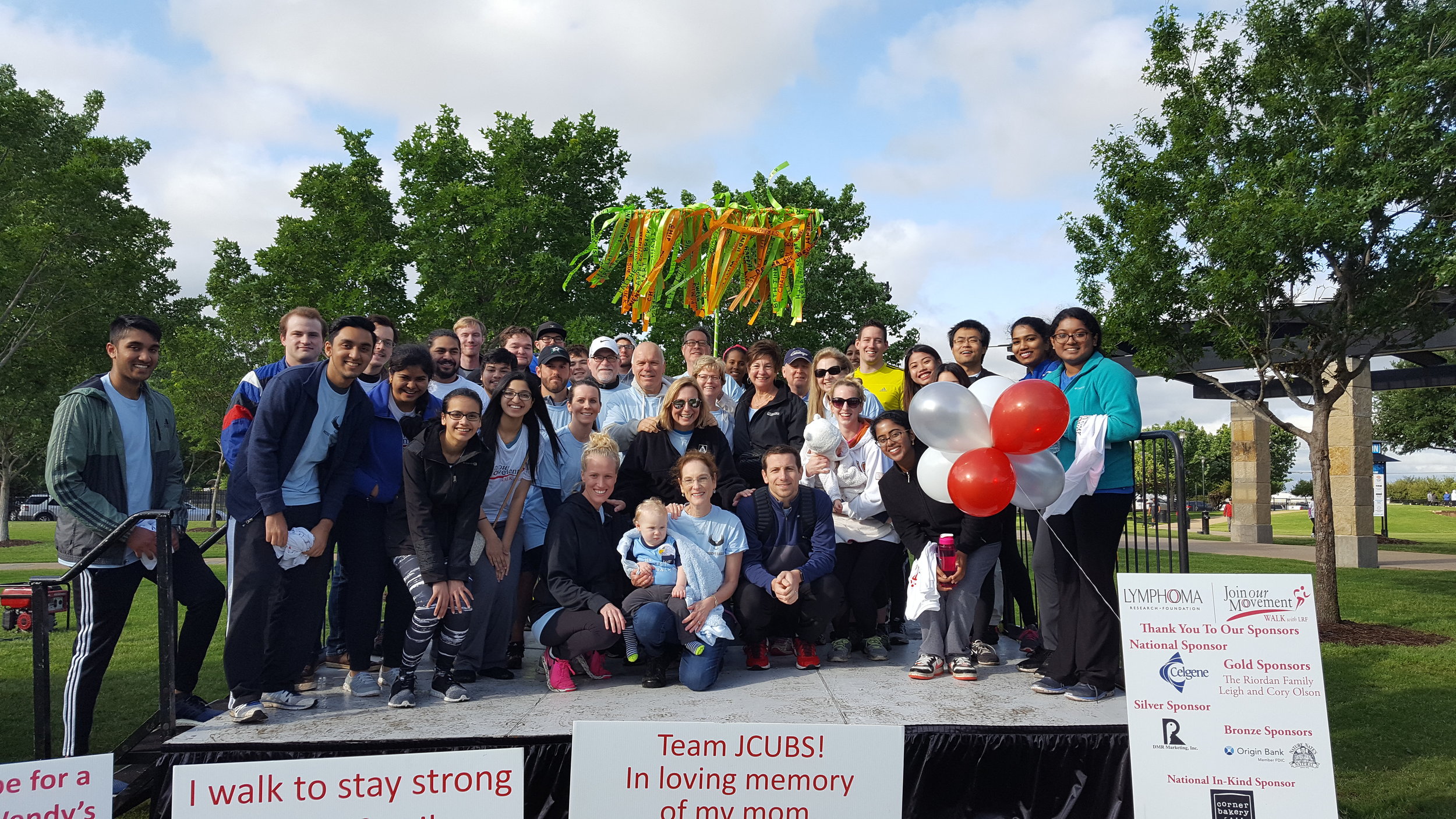It's easy to get so caught up in an event we forget why we're doing it. I'm breaking my 250-word-limit rule to share the 706-word speech I delivered yesterday at the start of the 5K Dallas Lymphoma Walk
Good morning! My name is Wendy Harpham. I am a retired doctor of internal medicine and, thanks to lymphoma research, a 27-year survivor of follicular lymphoma. I want to tell you a story of hope. Unlike most pre-walk inspirational talks, the story I’m going to tell is not mine or that of any other patient, but the story of a doctor.
Dr. John Pagel was an oncology fellow in the late 1990’s at the Fred Hutchison Cancer Research Center. He was a brilliant researcher whose passion was helping patients. Whenever he talks about his research, he emphasizes, “We’re talking about people’s lives!”
His passion motivated him through the years of training to get his MD and PhD, and then through the long hours in his research lab.
Dr. Pagel was most interested in two things: (1) finding cures for lymphomas for patients who ride the roller-coaster of remissions and recurrences, patients like me who don’t have curative treatment options and (2) finding less toxic treatments, so future patients can survive a long time, like me, but who will be spared the treatment-related fatigue, immune deficiencies, cognitive problems and other aftereffects that shape the lives of so many long-term survivors.
In the 1990’s in his lab, Dr. Pagel came up with a fantastic idea for a new way to treat lymphoma that had encouraging results in small early studies. Sadly, the NIH would not fund his research. Why? His idea was novel, which meant it was high risk and could fail. The NIH likes to fund projects with a high likelihood of success, most of which make one small change in an established way of treating cancer and yield incremental improvements in treatment, at best.
What happened to Dr. Pagel after the NIH turned him down? By that time, he had a wife and two young children. His inability to get NIH funding put him at a crossroad in his life. He could not pursue his brilliant idea, could not maintain his lab, and could not provide for his family. He was preparing to let go of his promising research career and become a community oncologist when the LRF, like a knight in shining armor, gave his lab a $35K grant.
$35K. It’s not a ton of money. But it was enough for Dr. Pagel to perform the pilot project. The pilot had promising results that enabled him to get a grant from the NIH, which snowballed into more project grants.
Where is Dr. Pagel today? He’s still working long days and nights in his lab. When I talked with him on the phone this week, he told me excitedly about getting closer to cures for those lymphomas that still don’t have curative treatments—and his treatment causes far less toxicity than current therapies. Some of his newer work is exploring a way to treat refractory lymphoma, namely, lymphoma that continues to grow despite the patient receiving the best available standard therapies, including the newer immunotherapies.
With every lap you walk this morning, you help the LRF support research on a promising new treatment, a novel treatment that the NIH won’t fund and that, without LRF support, would languish on a shelf, untested.
With every dollar you donate, you help LRF support a young investigator who, otherwise, would be forced to leave research—all that training and all that passion going to waste.
Today, people all over the country are participating in the March for Science. These marchers understand that trials that fail are a necessary part of good science that makes progress. As long as science is well-funded, there are no incurable lymphoma...only types of lymphoma for which researchers are working toward a cure.
Money can’t buy happiness. Money can buy hope. Every one of you standing here represents a good reason to have hope…hope of LRF funding some young investigator who ultimately finds a key to safer, more effective treatments for lymphoma.
For me, with every lap I walk around Addison Circle Park today, I’ll be nourishing my hope that one day, in my children’s lifetime if not mine, those three words—you have lymphoma—will no longer cause fear, for lymphoma will no longer pose a threat. Now go out there and have hope.
P.S. Dear blog followers: Thank you to those of you who supported my walk. If you'd like to support my effort to help others, visit my donation page at http://tinyurl.com/WWE2017
We welcome YOUR comments!
SEE READERS' COMMENTS UNDER COMMENT BOX (below)
For email notifications of new posts, subscribe here
For archives of older posts, click here.

